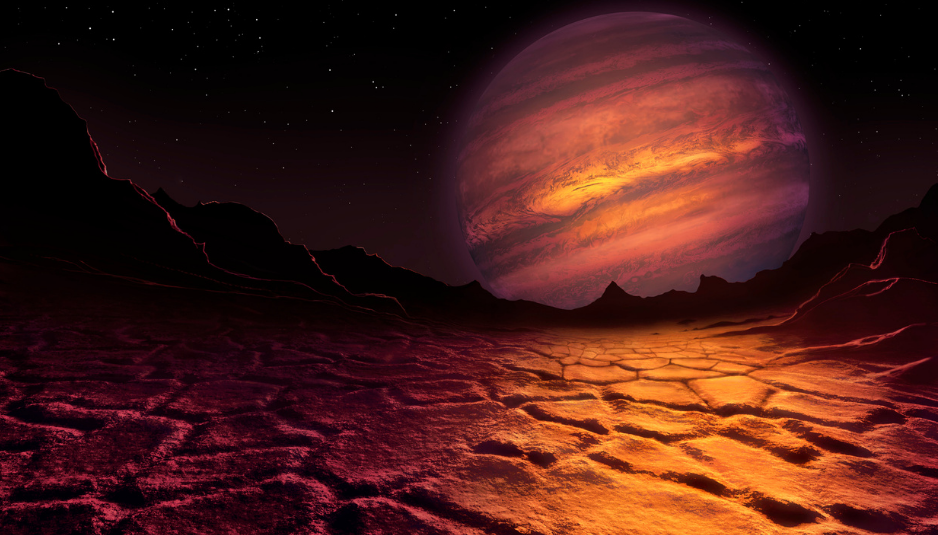
Brown Dwarf Facts and Features
Let’s kick off with some hot facts about Brown Dwarfs!
- Brown dwarfs are considered sub-stars or sub-stellar objects. They only have about 0.075 times the Sun’s mass and are not massive enough to fuse hydrogen in their cores.
- Brown dwarfs are much larger than the largest gas giants so they are not considered planets either. Their masses range from 13 to 80 Jupiters.
- Brown dwarfs start with the same formation process as the stars. They are also surrounded by protoplanetary disks. However, they differ from main-sequence stars because they never get to the stage of hydrogen fusion.
- Detecting brown dwarfs is quite a challenge because these objects do not generate their own energy. Brown dwarfs emit very little visible light so they are usually detected through X-rays and infrared.
- The first confirmed brown dwarf is Teide 1. It was discovered on September 14, 1995, by a group of Spanish scientists.
- Brown dwarfs were previously called “black dwarfs.” This term was used more generally for dark substellar objects in space. American astronomer Jill Tarter introduced the term “brown dwarf” in 1975 and it stuck ever since.
- In terms of appearance, brown dwarfs do not look brown at all. The colors of these objects are more indicative of their temperature, with hues from deep red to magenta.
- Some brown dwarfs orbit a star just like planets do. Some of them are in binary systems, while others are starless—they wander alone through space.
- Estimates show that there are at least 25 billion brown dwarfs in the Milky Way galaxy. So far, we have only identified about 3,000 of them.
What Are Brown Dwarfs?
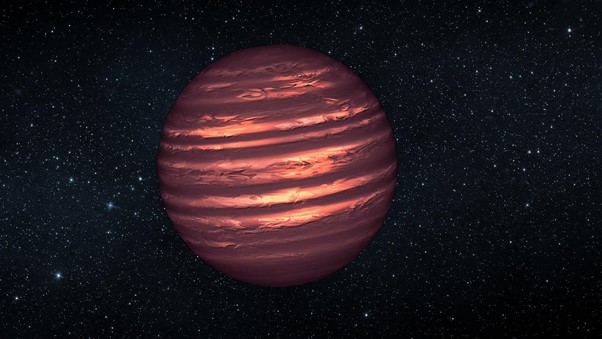
Brown dwarfs are unique objects with a category of their own. Though they start just like stars, they do not fully develop into one. They can have a planet-like appearance but are not considered planets either.
Brown dwarfs are called “failed stars” because they do not reach the stage of thermonuclear fusion of hydrogen in their cores. Objects from stellar disks become true stars when they finally ignite by fusing hydrogen to helium in their cores. By this time, they will be called main-sequence stars.
According to the International Astronomical Union (IAU), the smallest brown dwarfs are around 13 times as massive as Jupiter. The objects can already fuse deuterium with this mass but not hydrogen fusion. A minimum of roughly 80 Jupiters is needed to sustain hydrogen fusion—objects with this mass are red dwarfs, the smallest stars.
Identifying Brown Dwarfs
Aside from their low mass, we can also identify brown dwarfs based on their formation process. These objects start out just like stars forming from stellar nurseries. They are definitely not planetary objects since planets are born from accretion disks around a star.
Though they are called “brown dwarfs,” the colors of these objects are not actually brown. They are of different colors, ranging from red to magenta.
Some brown dwarfs orbit around a star, just like planets do. However, some of them are in a binary system. Just like binary stars, binary brown dwarfs orbit each other.
Aside from that, there are also starless brown dwarfs. As the name suggests, these are isolated brown dwarfs that travel alone through space. Just like rogue planets—planet-sized objects that are not bound to any star.
Why Are They Called Brown Dwarfs?

The existence of brown dwarfs was first theorized by astronomer Shiv S. Kumar in the 1960s. He called them “black dwarfs” since he imagined them as dark objects that were not powered by hydrogen fusion.
In 1975, American astronomer Jill Tarter suggested calling these substellar objects “brown dwarfs.” This is to avoid confusion since cold white dwarfs are also called “black dwarfs.” No white dwarf has totally cooled yet, so black dwarfs are still theoretical objects.
The name “brown dwarf” does not describe the appearance of these failed stars. In terms of color, they appear deep red to magenta. However, the term “red dwarf” is already used for the coolest hydrogen-fusing stars. With that said, the name brown dwarf remains.
Brown Dwarfs vs Red Dwarfs vs White Dwarfs vs Black Dwarfs
Brown dwarfs are sometimes confused with red dwarfs and white dwarfs because of their names. However, these three are very different objects.
To cut the confusion, red dwarfs and white dwarfs are stars but brown dwarfs are not.
- Brown dwarfs – Substellar objects that do not have enough mass to power hydrogen fusion reaction in the core.
- Red dwarfs – The smallest, coolest, and most common type of star in the Milky Way. The characteristics of some red dwarfs overlap with brown dwarfs. However, red dwarfs are different because these main-sequence stars are powered by hydrogen fusion.
- White Dwarfs – Very dense objects that are the remnant cores of red giant stars. A white dwarf is what is left after old stars shed their outer layers. It represents the last stages of life of medium to low-mass stars. It is also called a degenerate dwarf.
- Black Dwarfs – Cooled remnants of white dwarfs. This is still a theoretical remnant since no white dwarf has reached this stage yet. The age of the Universe is 13.77 billion years, and white dwarfs take longer than that to become black dwarfs.
Life Cycle of Brown Dwarfs
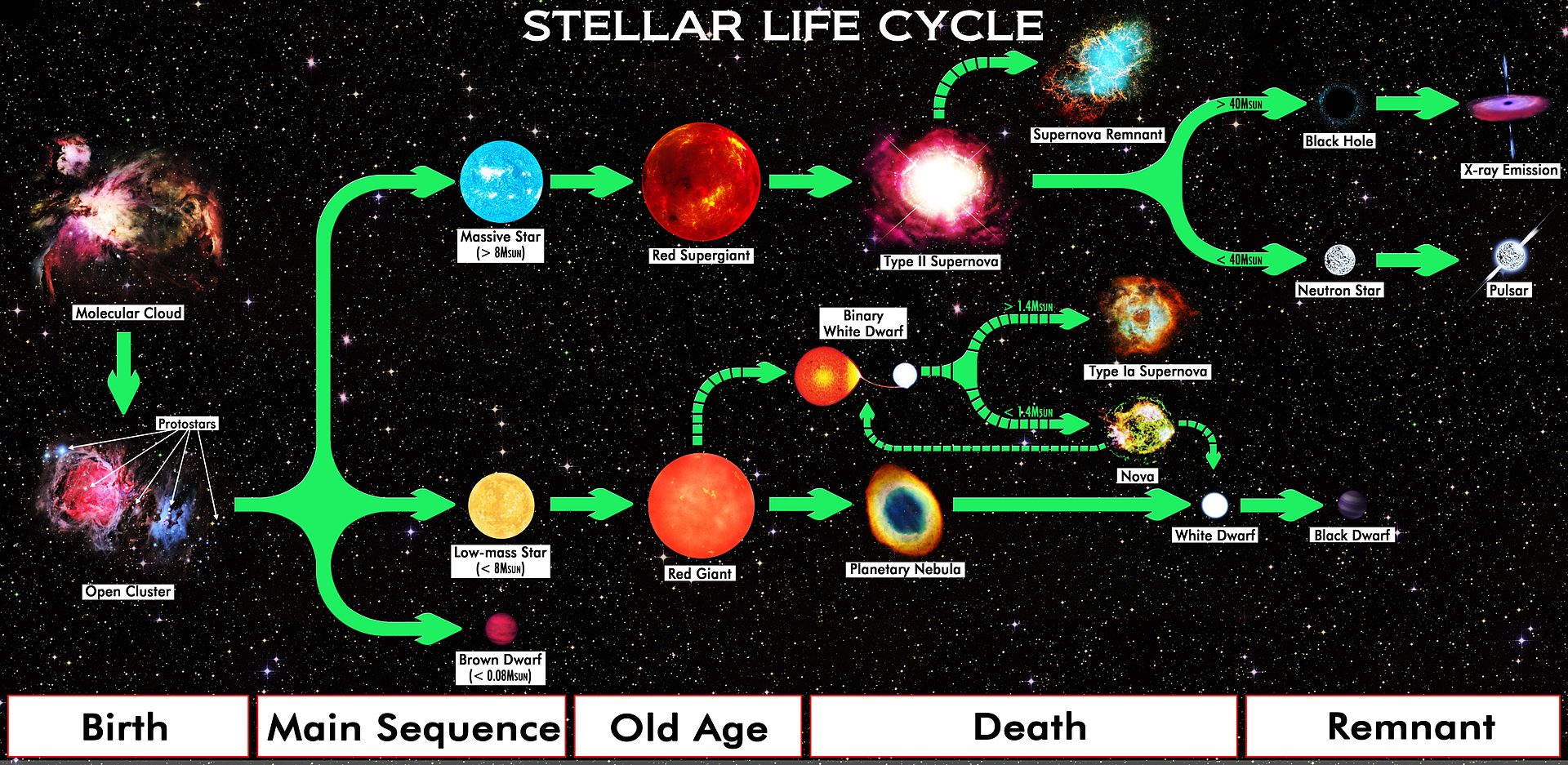
Stars and brown dwarfs share a common life cycle, at least in the beginning.
A star’s life begins in a large cloud of gas and dust. These clouds come together due to gravity and over time, a protostar is born. A protostar is like a clump of molecules that is warmer than the rest of the cloud. Also, it is still in the stage of gathering mass from its parent cloud.
As the object heats up, nuclear fusion ignites in its core. By this time, it is already a main-sequence star. It is powered by converting hydrogen into helium. There are two types of main-sequences stars: massive and average/low-mass stars. Each of these types will follow different stages in its stellar life.
The Leftovers
Massive main-sequence stars will become a red supergiant and can leave behind a black hole as a remnant. Meanwhile, low-mass stars like the Sun will enter the red giant stage after. It will leave behind a white dwarf when it dies.
Some protostars do not develop further into the main-sequence stage. While they can burn deuterium, they do not contract further to kickstart hydrogen fusion. They become stable and do not develop into stars. Instead, these failed stars become brown dwarfs.
The deuterium makes brown dwarfs shine in the early stages of their lives. This does not last long though, that is why they have low luminosity. They shine for only about 10 million years, at maximum.
After brown dwarfs consume their deuterium fuel, they become invisible to optical telescopes. So, the best way to detect these objects is through infrared wavelengths. They can be great radio-emitters too because of their strong magnetic fields.
Heat will continue to escape brown dwarfs since they no longer have any fueling mechanism. It will continue to do so as they slowly collapse under their weight. In the end, brown dwarfs will become nothing but dark balls floating in space.
Why Are Brown Dwarfs Not Really Stars at All?
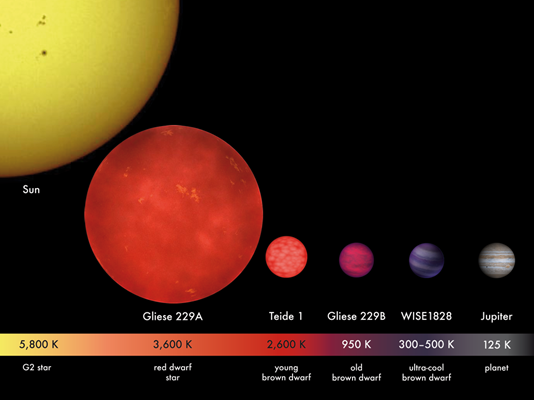
Brown dwarfs are not considered stars because they do not generate energy through hydrogen fusion as stars do. An object’s mass is a big factor in this.
Stars and brown dwarfs are born from clouds of gas and dust. This dust accumulates over time, and with the help of gravity, it collapses into itself. This collapse heats the star internally, igniting thermonuclear fusion reactions in its core.
In the first few million years of their lifetime, both stars and brown dwarfs generate energy by fusing deuterium in their interior. The rare element, deuterium, is not hydrogen but an isotope of it. It is also called “heavy hydrogen.”
From burning deuterium, stars continue to contract until they get hotter and hotter to fuse hydrogen. This is the mechanism that makes the stars shine.
Brown dwarfs, however, reach a stable state and they do not contract further. While the most massive brown dwarfs can begin hydrogen fusion, they eventually stabilize and stop fusing hydrogen.
At maximum, a gas giant planet can have about 13 times the mass of Jupiter. Objects with a mass greater than that can burn deuterium internally.
Overall, brown dwarfs have a mass between 13 to 80 Jupiters. Those with more than 80 Jupiter masses can already burn hydrogen and are therefore considered stars.
Is Jupiter a Failed Star?
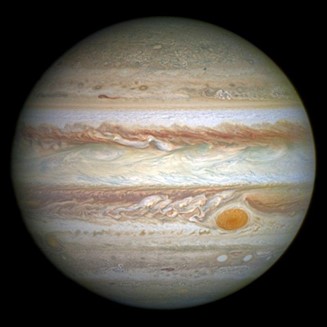
We often use the gas giant Jupiter as a reference when talking about the mass of brown dwarfs.
Some people call Jupiter a “failed star” because it is made up of the same elements that make up the Sun—hydrogen and helium. However, the Sun’s composition is not the only thing that makes it a star. Its mass plays a big part in this.
Even though Jupiter is very large compared to other planets in the solar system, it is still very small when compared to the stars. Most importantly, Jupiter has to be about 75 more massive than its current mass for it to start hydrogen nuclear fusion in its core. Only by then will it become a star.
Brown Dwarf Characteristics
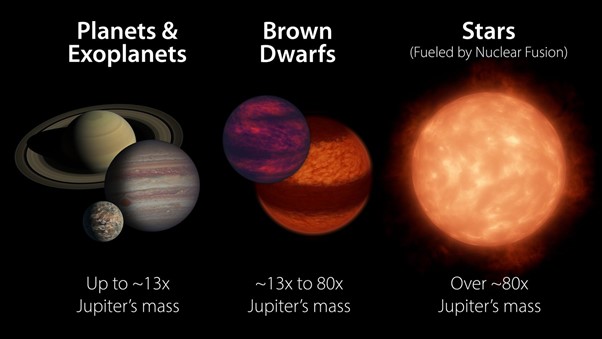
Mass
The mass of brown dwarfs makes them a classification of their own. They are heavier than planets but lighter than stars. We can use the mass of the largest planet, Jupiter, as our reference.
To easily remember, brown dwarf mass is around 13 to 80 times the mass of Jupiter.
Color/ Appearance
Stars shine because they are powered by nuclear fusion in their cores. Planets, on the other hand, reflect light from their parent stars. Brown dwarfs are different because they seem to “glow.”
The glow from brown dwarfs is leftover heat from earlier stages of its life. It will continue to lose this remaining heat until becomes dimmer and dimmer.
The color of brown dwarfs tells us something about their temperatures. The warmest of them appear orange to red and the cooler ones are seen with darker magenta hues.
Temperature
Since they are neither stars nor planets, the temperature of brown dwarfs is also intermediate between the smallest stars and the largest gas giant planets. Factors such as the age and mass of brown dwarfs affect their temperatures.
The youngest are also the most massive brown dwarfs. They have a maximum temperature of 2,800 K. This means they can be as hot as red dwarf stars, the coolest main-sequence stars. To note, the surface temperature of red dwarf stars is around 2,000–3,500 K.
However, brown dwarfs do not retain this temperature as they cool down over time. For the oldest and smallest of them, their temperature can even reach as low as 300K.
Bands of Clouds and Powerful Winds
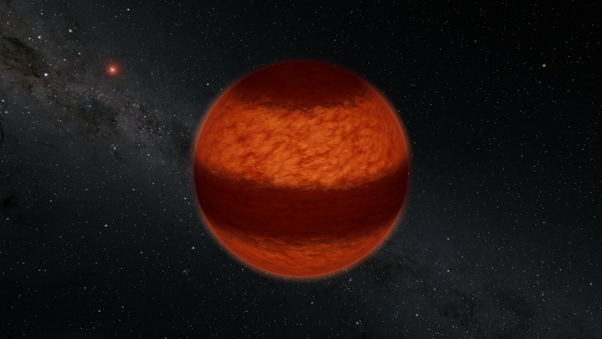
New findings suggest that brown dwarfs actually have an extreme weather system comparable to that of Jupiter—but much much stronger.
As astronomers observed candidate brown dwarfs, they noticed changes in the infrared emissions of these objects. The brightening and dimming episodes were likely a result of opaque clouds surrounding the hotter interior.
In 2013, NASA was able to create a weather map of a brown dwarf. Using the Hubble Space Telescope and the Spitzer Space Telescope, the research has shown wind-driven bands of large clouds in the atmosphere of the brown dwarf 2MASS J22282889–4310262.
In 2020, striped cloud patterns were discovered in Luhman 16A. This is the closest brown dwarf to Earth, lying only 6.5 light-years away in the constellation of Vela. Astronomers used polarimetry for these findings, and it is already for publication in The Astrophysical Journal.
Brown Dwarfs Classification
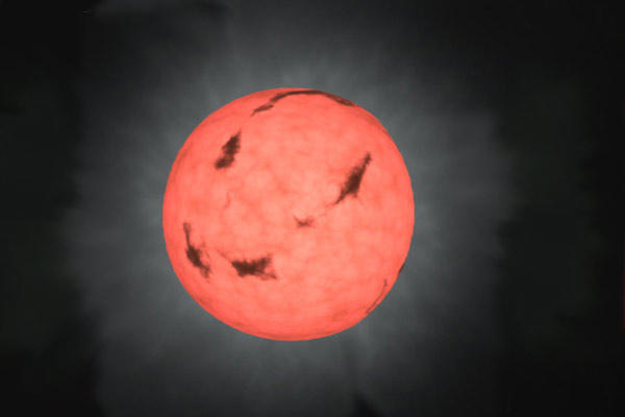
Brown dwarfs are in the spectral class M, L, T, and Y.
- Spectral Class M – They are almost similar to red dwarfs. Often called late-M dwarfs, they have temperatures less than 3500K. Their spectra consist of titanium oxide and vanadium oxide. An example is the young brown dwarf Teide 1.
- Spectral Class L – Their spectra have metal hydride bands and alkali metals. The prototype of this class is GD 165 B. The coolest main-sequences dwarf stars also share this spectral class. The temperature range is 1,300K to 2,000K and they are usually red-brown.
- Spectral Class T – Brown dwarfs of this spectral class appear magenta and are dominated by methane absorption bands in their atmospheres. The surface temperatures of these objects range from 700 to 1,300 K. Gliese 229B is the prototype of this class.
- Spectral Class Y – The coldest brown dwarfs are in this classification, with temperatures lower than 600K. In 2011, the Wide-field Infrared Survey Explorer (WISE) of NASA discovered six very cool Y dwarfs. And in 2020, WISE J0830+2837 was discovered. It was the first Y dwarf identified by citizen scientists of the Backyard Worlds.
Sometimes, sub-brown dwarfs are categorized as Y dwarfs. To note, sub-brown dwarfs form just like stars and brown dwarfs but they are as massive as planets.
Notable Brown Dwarfs
Teide 1
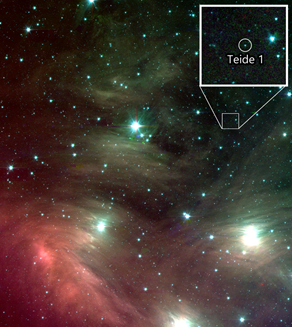
Teide 1 was the first brown dwarf discovered. It is located 400 light-years from us in the Pleiades star cluster. The discovery of this object in 1995 was the first solid evidence of the then-theoretical class of brown dwarfs.
Teide 1 has a spectral class of M8. It has about the same radius as Jupiter but it is roughly 57 times more massive. This brown dwarf is estimated to be around 129 million years old.
Luhman 16
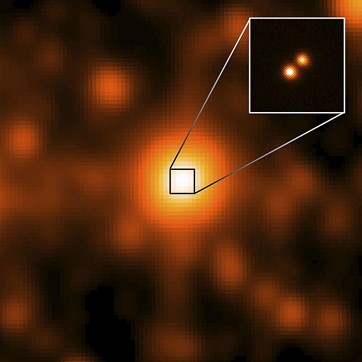
Luhman 16 is a binary brown dwarf system. It is located 6.5 light-years from us in the Vela constellation. It is one of the closest known systems to us.
Luhman 16 A is an L-type brown dwarf while Luhman 16 B is in the T spectral type. The primary component is about 35 times the mass of Jupiter while the other one is nearly 30 times as massive. They orbit each other every 27 years.
GD 165 B
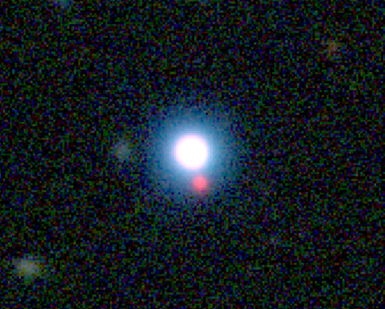
GD 165 B is a brown dwarf that orbits the white dwarf GD 165 A. This interesting system is located about 103 light-years away in the Boötes constellation.
GD 165 B is the first brown dwarf discovered in the L spectral type. It has a mass of around 63 Jupiters, and it does not contain lithium in its spectrum. Its temperature is around 1750 K.
Gliese 229 B
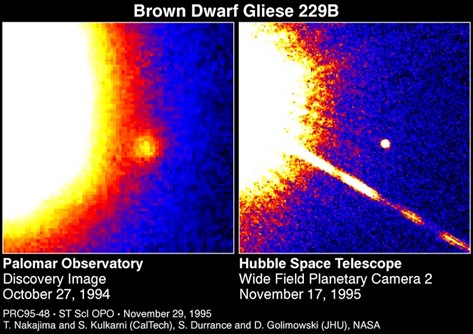
Gliese 229 B is a brown dwarf around a red dwarf star. This binary system is located approximately 19 light-years in the Lepus constellation.
Gliese 229 B has a surface temperature of 950 K, and it has likely consumed its deuterium fuel long ago. Along with it, exoplanet candidates were discovered surrounding the red dwarf star in the system.
| Other Notable Brown Dwarfs | |
|---|---|
| WISE 0855−0714 | ● The coolest brown dwarf (Temperature: −48 to −13 °C) |
| COCONUTS-1B | ● The oldest (Age: ~7.3 billion years) |
| 2MASS J04335245+2612548 | ● The youngest (Age: less than 2 million years old) |
| ● It is a member of the Taurus Molecular Cloud | |
| TOI-569b | ● The densest (Density: 171.3g/cm3) |
| ● This transiting brown dwarf was discovered in 2020 by Transiting Exoplanet Survey Satellite (TESS) | |
| 2MASS J03480772−6022270 | ● Fastest rotation period (1.08 hours) |
Sources:
(https://public.nrao.edu/radio-astronomy/star-life-and-death/)
(https://earthsky.org/space/definition-what-are-brown-dwarfs/)
http://www.whillyard.com/science-pages/type-lty-dwarfs.html
Image Sources:
What Are Brown Dwarfs?: https://upload.wikimedia.org/wikipedia/commons/thumb/e/e0/Artist%E2%80%99s_conception_of_a_brown_dwarf_like_2MASSJ22282889-431026.jpg
Why Are They Called Brown Dwarfs?: https://live.staticflickr.com/8332/8129312644_df37e74907_z.jpg (Shiv Kumar by Mark McCaughrean at Flickr.com )
Life Cycle of Brown Dwarfs:
https://upload.wikimedia.org/wikipedia/commons/thumb/4/47/Star_Life_Cycle_Chart.jpg/1920px-Star_Life_Cycle_Chart.jpg
Brown Dwarf Characteristics: https://caltech-prod.s3.amazonaws.com/main/images/BD_Info.max-1400×800.jpg [NASA/JPL-Caltech/R. Hurt (IPAC)]
Bands of Clouds and Powerful Winds: https://stsci-opo.org/STScI-01EVSTFJCMR6AKR4RRWJCAMEQ5.png
Brown Dwarfs Classification: https://upload.wikimedia.org/wikipedia/commons/1/1b/Late-M-dwarf-nasa-hurt.png
Teide 1: https://upload.wikimedia.org/wikipedia/commons/thumb/4/4e/Pleiades_and_Teide_1.png/800px-Pleiades_and_Teide_1.png
Luhman 16: https://upload.wikimedia.org/wikipedia/commons/thumb/7/7f/Two_Brown_Dwarfs_in_Our_Backyard.jpg
GD 165 B: https://upload.wikimedia.org/wikipedia/commons/a/ae/GD_165.png
Gliese 229 B: https://upload.wikimedia.org/wikipedia/commons/7/78/Brown_Dwarf_Gliese_229B.jpg